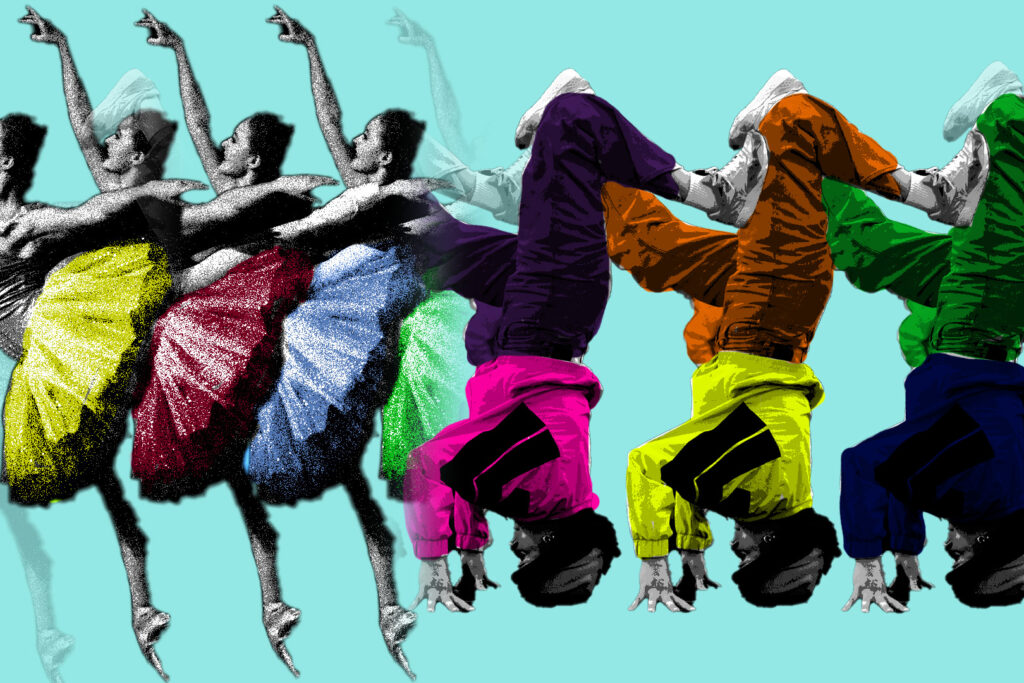
This story is syndicated from The Spectator, the newspaper of Stuyvesant High School in New York City, NY. The original version of the story ran here.
These are times when everybody needs a good distraction: Politicians are screaming. Markets are swinging. Superstorms are brewing. What can we all do in response?
Dance.
As the great choreographer Pina Bausch once said, “Dance, dance, otherwise we are lost.” In fact, dancing is much more than a distraction.
Dance naturally boosts your mood by combining physical movement and music to release feelings of joy. Not only does dancing improve physical health, but it is also beneficial to mental health. This encouragement of movement releases specific hormones — including dopamine, serotonin, and oxytocin — causing energy levels to rise. But, how exactly are these feelings expressed?
Found in virtually every culture around the world, dancing has been prevalent throughout history for good reason. Cave paintings in ancient India dating back to 8000 BCE reveal some of dance’s earliest history, while predynastic Egyptian (4000 to 3200 BCE) and Neolithic Chinese (before 2000 BCE) art and pottery depict the first recorded dances of each tradition. In many different traditions, dance can often be connected back to forms of worship and celebration.
A look at professional dance reveals why it’s such a healthy, spontaneous and powerful mode of self-expression. There are five main aspects to professional dance that allow us to paint our expressions naturally: the body, action, space, time and energy.
The body acts as the dancer’s main brush, while the action corresponds to how the dancer wants the audience to perceive the stroke. Speed and frequency play a major role in conveying appropriate action depending on the choreography.
Space, time, and energy provide rhythm and a sense of fulfillment, making dance an enjoyable sport to observe. Space can be measured by how expansively a dancer wants to express themselves; professional dancers may incorporate large spaces to show more emotions in their work of art.
Meanwhile, time and energy provide a framework for dancers, allowing them to conjure a passionate choreography that tells a story. The energy that dancers put into their work displays their intent with each emotion. Some dancers may incorporate light movements to display delicacy, while others may move in stronger strides to convey power and tension. Time instructs a dance’s tempo and rhythm. Depending on their energy, some dances incorporate faster beats and rapid movements to express feelings of shock or panic. Others may have more “flowy” rhythms to portray a serene space and a more tranquil environment.
Chemically, we’re all wired to benefit. Perhaps the most significant hormone that yields positive emotions through dance is dopamine — a mood booster released by neurons as part of our body’s internal reward system. When an individual is dancing, they experience dopamine’s feelings of pleasure and motivation. The chemical is also released during other kinds of exercise, fulfilling your body’s sleep requirement, or even engaging in meditation.
Dancing also boosts serotonin — a natural body chemical regulating overall well-being —crucial in improving one’s mood more stably and fighting off depression. Serotonin regulates many activities, including a person’s attitude and memory. To complement the boost, the stress chemical cortisol also decreases when dancing, literally providing a memorable dancing experience.
While dancing or engaging in any pleasurable act, your body naturally reacts by producing oxytocin. Oxytocin, the “bonding hormone,” strengthens emotional connections — and plays a prominent role when humans dance with others in a social setting. Dancing also tackles cognition, leading to better memory; creating and remembering choreography encourages brain health and boosts overall cognitive processing.
Music and rhythm play a crucial part in triggering the release of these chemicals, regardless even of whether or not your body is moving. Listening to your favorite song may trigger dopamine release and enhance your mood. Similarly, endorphins are also released while dancing, acting as natural painkillers to relieve stress.
Incorporating dance into your life helps you gain more control over your body — all of your muscles are involved in the movement. Music enhances a person’s emotional well-being by stimulating positive emotions and promoting relaxed feelings. Dancing is a form of emotional expression through movement that boosts overall confidence. As a popular form of art, dance also conveys a sense of change and development by incorporating emotion into movement.
Have you ever considered trying dance as a way to express your interests and ideas? There’s never been a better time. Dance alone and dance with friends– at school, a studio, or at a casual hangout. On a deeper level, social connections through dance can help build friendships and encourage teamwork. Dancing in sync with other performers emphasizes a sense of community and connection between dancers, uniting their steps in choreography. As a bonus, the body starts to see physical changes as people continue to dance, engaging in movements that are beneficial to their health.
Dance is open to all ages and present in many forms: ballroom dancing, tap dancing, freestyle, jazz, and so many more — but it is never restricted. Today’s headlines may not make you want to dance, but that’s all the more reason to do it.
